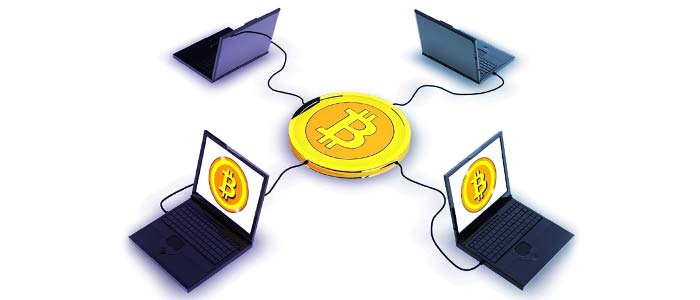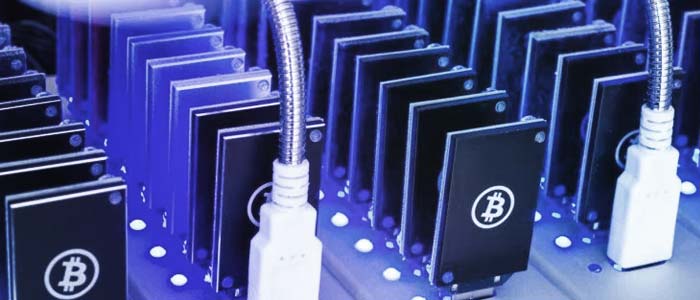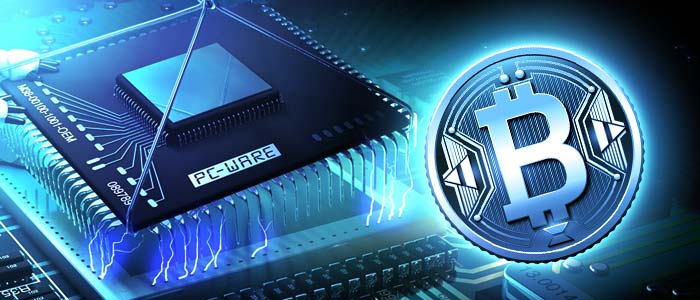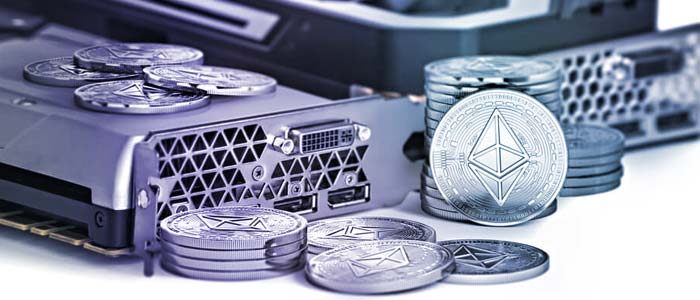Cryptocurrency Knowledgebase – Mining Pools
What are Mining Pools?
Mining pools play a crucial role in the cryptocurrency industry. We’ve talked about mining pools several times throughout the first four chapters of this guide. In this chapter, however, we’re going to explain mining pools in greater depth.
Mining pools, essentially, are groups of users who collect or “pool” their processing power – their hashrate – together to give themselves a better chance of earning a block reward.
In the early days of bitcoin, any individual with a gaming GPU could easily mine bitcoin and get block rewards. Over time, however, as the difficulty has increased, it has become virtually impossible for an individual node to mine bitcoin. Today, the vast majority of bitcoin mining is done through pools.
A pool rewards users based on their contributions to the pool. The more processing power you give to the pool, the higher your reward will be. Some pools charge a fee (of, say, 2%) while others do not.
In this chapter, we’ll explore the following topics:
- What Are Mining Pools?
- Bitcoin Mining Pools
- Ethereum Mining Pools
Chapter 5.1
Mining pools are groups of cryptocurrency users who have combined their processing power together to give themselves a better chance of earning a block reward.
Each “pool” consists of a network of nodes operated by individual users or corporations. Each node is a computer dedicated to mining bitcoin. A node might have 6 GPUs all dedicated to mining bitcoin, for example. That processing power gets added to the processing power of everyone else in the pool. Effectively, this creates a global supercomputer that can mine bitcoin more efficiently than any individual miner.
Today, it would take a year – or even longer – to mine a bitcoin with a single node. Top pools like Antpool, meanwhile, are able to collect the block reward (12.5 BTC) for approximately one in every three or four bitcoin blocks added to the blockchain. That’s the value of mining.
All major cryptocurrencies have mining pools. Bitcoin mining pools are understandably the largest. However, you can also see mining pools for Litecoin, Ethereum, Bitcoin Cash, and other major cryptocurrencies.
The value of joining a mining pool is obvious: pooling resources together leads to faster generation of bitcoins – or whatever other cryptocurrency you’re mining. When you’re mining alone, you’re mining with the hashpower of your single node. Even with 6 GPUs or an ASIC, that can lead to slow results. By pooling your 6 GPUs with the GPUs of thousands of nodes, you significantly increase your chances of winning each block reward.
How Do You “Join” a Mining Pool?

Joining a mining pool is straightforward. In fact, you might not even need to do anything: most mining software and apps you download will come with their own default mining pools.
You can mine on these pools if you like. Or, you can change the settings in the software to switch to your preferred custom pool.
When you’re ready to change to a new mining pool, you’ll need to enter the address of that mining pool into your bitcoin mining software along with your username and password.
To get a username and password for a mining pool, you’ll typically need to sign up at the official website. To join Antpool, for example, you’ll need to visit www.antpool.com and click the “Register” button on the upper right-hand corner. Some pools require you to verify your email address and phone number before your registration is confirmed.
Types of Mining Pools

There are multiple types of mining pools. Each are built on the same basic principles: they each mine cryptocurrency by pooling the resources of multiple miners together. However, they differ in a number of significant ways – including the coins they mine and the way they collect processing power together:
Single Coin Pools
A single coin pool allows users to mine a single type of cryptocurrency – like only Ethereum or only bitcoin.
Multi Coin Pools
Multi coin pools allow miners to mine multiple coins at the same time while (mostly) preserving efficiency between coins. Some popular pools online today will automatically switch to the most profitable coin, for example, and then convert pool profits into bitcoin before distributing them. Mining profitability varies constantly based on difficulty and the amount of hashrate devoted to that particular blockchain. By switching between coins, a multi coin pool may be able to generate more profit than a single coin mining pool.
Local Mining Pool
Mining pools differ in the ways in which they “pool” mining power together. Some bitcoin mining pools, for example, are local mining pools. These pools consist of ASIC devices purchased and maintained by the user locally. The pool is still organized over the internet, but each user maintains his or her bitcoin miner locally. The miner connects his or her computer to the pool over the internet using bitcoin mining software.
Cloud Mining Pools
Cloud mining pools organize processing power over the cloud. You purchase a contract from a cloud mining pool, then access a certain amount of hashpower throughout the term of your contract. You don’t need to purchase or maintain equipment on your own. It’s an online mining contract. Someone maintains the mining equipment in a remote location – like a server farm in China or Iceland. You “rent” the hashpower of this server.
What’s the Difference Between a Good and Bad Mining Pool?

There are plenty of mining pools available across the cryptocurrency community. Which mining pool, however, is the right choice for you? What’s the difference between good and bad mining pools? How do you know which mining pool to join?
Here are some of the things that separate mining pools from one another:
- Pool fees
- Payment systems
- Type of currency mined
- Location
- Vardiff
- Customer service, transparency, reputation, etc.
We’ll take a closer look at all of these aspects below.
Pool Fee
Some mining pools have a pool fee. This pool fee can range from 1% to 4%. Typically, a lower fee (or a zero fee structure) means the user is absorbing most of the risk. A 4% fee, on the other hand, suggests that the mining pool is absorbing the risk.
Typically, when a new mining pool launches, it will launch with a 0% fee to entice miners to join. This can make joining a new mining pool lucrative. However, users also assume higher risk with new mining pools. Plenty of new mining pools are scams. They pool user resources together, mine cryptocurrency and earn rewards, then refuse to pay out. That’s why many users feel more comfortable sticking with the major crypto mining pools – even if they do charge higher fees.
Payment System
How do miners in the pool get paid? Payment method and payment restrictions can vary widely between pools.
Most pools have a certain minimum amount you need to mine before withdrawing your cryptocurrency. There might be a minimum account balance of 0.01 BTC before you withdraw, for example.
In most pools, payment works in a simple way: the pool mines a certain number of bitcoins every month. All miners in the group can check the blockchain to verify which pool mined which bitcoin. The bitcoin block rewards (12.5 BTC per block) are placed into a bitcoin wallet. Then, at the end of every payment period – say every day, week, or month – the bitcoins are distributed to miners based on their contributions to the pool. The pool tracks how much each miner contributed to each block, then sends a fraction of the 12.5 BTC reward to that miner’s wallet.
It’s also important to note that not all mining pools distribute rewards proportionally based on contributions to the pool. Proportional and PPLNS payment systems are the two most popular methods used today, although there are a number of others used by pools:
Proportional (“Prop”): With proportional bitcoin mining pool payment systems, the reward is split between the hashing power contributed proportionally by the miners of the block. It’s a simple and effective payment system used by many mining pools. If someone refers to the pool’s payment system as being “prop”, then they mean it’s proportional.
Pay Per Last N Shares (PPLNS): With Pay Per Last N Shares (PPLNS) payment systems, the pool pays users based on the last N shares instead of just the last block. The main benefit of this payment system is that it provides more predictable returns for miners – especially when they haven’t been connected for one reason or another. For example, let’s say a miner contributed heavily to mining blocks 1 through 6, then disconnected due to a power outage before block 7. The pool didn’t find the block reward for blocks 1 through 6, but they did find a block reward in block 7. Under the proportional payment system, this unlucky miner would receive no share of the reward – despite the fact that they’ve contributed significant processing power and electricity to the pool. Under PPLNS payment systems, they’re still eligible for a payout.
Pay Per Share (PPS): Pay Per Share payment systems, or PPS, give each submitted share a certain value of bitcoin. These payment systems are relatively risky for pool operators, so you can expect to pay higher fees.
Capped Pay Per Share with Recent Backpay (CPPSRB): Capped Pay Per Share with Recent Backpay payment systems pay unpaid shares whenever a block is found. The most recent 12.5 BTC block reward is distributed to miners. The main difference between PPLNS and CPPSRB payment systems is that no share is ever paid twice with CPPSRB, but old shares (including shares that missed out on a reward due to bad luck) have a chance to be paid when the pool is lucky.
Double Geometric Method (DGM): You might find some crypto mining pools using payment methods like the Double Geometric Method, or DGM. DGM payment systems are like a hybrid between PPLNS and geometric reward types. The main benefit is that operators can absorb some of the variance risk. The operator receives a portion of the payout on short rounds, then returns it on longer rounds to provide more predictable profits to pool members and pool operators.
Score: Some pools have a score-based payment system consisting of a proportional reward but weighted by time submitted. Later shares are worth more than earlier shares, so the miner’s score quickly diminishes when they suddenly stop mining on the pool.
Revenue Shared Maximum Pay Per Share (RSMPPS): Revenue Shared Maximum Pay Per Share (RSMPPS) payment systems prioritize the more recent miners first.
Shared Maximum Pay Per Share (SMPPS): Shared Maximum Pay Per Share payment systems are similar to Pay Per Share (PPS), but the pool will never pay more than the pool earns.
Equalized Shared Maximum Pay Per Share (ESMPPS): Equalized Shared Maximum Pay Per Share payment systems are similar to SMPPS, but the payments are equalized
Ultimately, make sure you understand the payment system carefully before you join a bitcoin mining pool. They vary widely between pools.
Type of Coin Being Mined

Which currency is the pool mining? Does the pool mine a single currency? Or do they switch between coins to mine the most profitable currency?
You might want to use a profitability calculator tool online to determine which cryptocurrency is most profitable at the moment. The most profitable currency changes all the time based on difficulty and the number of miners.
You might see some crypto mining pools refer to something called “Merge Mining”, which means mining two cryptocurrencies at once without sacrificing efficiency in either.
As mentioned above, there are also multi coin mining pools. These pools might switch between popular cryptocurrencies frequently, then exchange all mined coins into bitcoins before distributing profits to miners. With these pools, miners get the benefits of a multi coin pool – including maximum profits from mining activity – without the downside – a single, (relatively) stable cryptocurrency like bitcoin they can withdraw instead of dozens of lesser-known altcoins.
Location
The location of a mining pool is extremely important. If you’re based in the United States, then you shouldn’t mine on a Chinese server if you want to get the best results.
Of course, not all countries have their own well-established mining pools. China has always been over-represented in the mining pool world. Mining a Chinese server might not be the most efficient, but it could still be one of your best options.
Variable Difficulty (Vardiff)
Variable difficulty, or vardiff, is also an important way to compare mining pools with each other. Vardiff will regulate the difficulty of shares you receive to work on. This can benefit both low hashrate and high hashrate miners because the difficulty will adjust itself to best accommodate your hashrate.
Some mining pools have vardiff, while others use multiple ports for different difficulties. If you’re mining on a pool with no vardiff, then you should test different ports for different difficulties to determine which one best fits your hashrate.
Reputation, Support System, and Other Factors
You should also compare cryptocurrency mining pools based on their reputation, their transparency, their support system, and other factors. There are well-established mining pools with strong reputation systems and transparent customer service options. There are also shady mining pools with disreputable payment systems.
Conclusion
Cryptocurrency mining pools vary widely in terms of their location, the coins they mine, their reputations, their support systems, and other factors. By analyzing all of the factors above, you can choose the mining pool that allows you to capture the maximum possible profit with your cryptocurrency mining rig.
Bitcoin Mining Pools
Chapter 5.2
In the last chapter, we talked about crypto mining pools and how they work. We talked about how thousands of miners worldwide pool their resources together to increase profitability and raise the chances of winning a block reward.
Now, we’re going to talk specifically about bitcoin mining pools. Bitcoin, obviously, is the best-known cryptocurrency in the world today. There are plenty of well-known bitcoin mining pools – including Antpool, BTC.com, F2Pool, and BitFury.
Today’s top five mining pools are responsible for contributing approximately 80% of the hashrate to the bitcoin network. 4 of the top 5 bitcoin mining pools are based in China (Slush, meanwhile, is based in the Czech Republic).
It may be tempting to choose the biggest bitcoin mining pools. These pools are well-established and are the default choice for popular mining apps and software. However, bitcoin users concerned about network stability and hashpower concentration may want to choose a smaller mining pool. It’s healthier for the bitcoin network to choose a smaller pool. Of course, it’s also less than ideal to mine bitcoin with a Chinese mining pool when your miner is based in the United States.
With that in mind, let’s take a closer look at today’s top bitcoin mining pools, including how hashrate is distributed across each pool.
Where Are Bitcoin Mining Pools Located?

In September 2017, the Chinese government cracked down on cryptocurrency exchanges and cryptocurrency trading. They did not, however, target bitcoin mining operations.
Today, the vast majority of bitcoin mining pool hashrate is based in China. China-based mining pools are responsible for approximately 80% of the hashrate on the bitcoin network. China is led by major pools like BTC.com, Antpool, and ViaBTC. In fact, the only non-Chinese pool that cracks the top 6 mining pools in the world is Slush, based in the Czech Republic.
Here’s how bitcoin mining pool hashpower is distributed around the world:
- China: 81%
- Czech Republic: 10%
- Iceland: 2%
- Japan: 2%
- Georgia: 2%
- Russia: 1%
Why these countries? It’s generally accepted that bitcoin mining is unprofitable if you’re paying more than 5 cents per kWh for electricity. The countries above generally have access to cheap electricity. Hydroelectricity is particularly popular and cheap in Georgia, for example, while some mining operations are based in Iceland for its access to cheap geothermal electricity.
Top 10 Biggest Bitcoin Mining Pools in the World Today

Here’s how the top 10 mining pools break down by hashrate:
BTC.com (China): This China-based mining pool is a public mining pool run by Bitmain, the same company responsible for the Antminer series of ASIC devices. BTC.com is responsible for approximately 30% of the bitcoin hashrate on the network.
Antpool: Antpool is another China-based mining pool owned by Bitmain. The pool contributes approximately 15% of the bitcoin network’s total hashpower.
SlushPool: SlushPool is based in the Czech Republic, where it’s responsible for contributing approximately 11% of the bitcoin network’s total hashrate. Slushpool is run by Satoshi Labs, the same company behind the popular Trezor lineup of hardware wallets.
ViaBTC: ViaBTC is a relatively new mining pool based in China.
F2Pool: F2Pool, also known as DiscusFish, is a China-based mining pool responsible for mining approximately 7% of the blocks on the bitcoin network.
BTC.top: BTC.top is a private pool based in China. Membership in the pool is not open to the general public. The pool is responsible for approximately 7% of the bitcoin network’s hashing power.
Unknown: After BTC.top and F2Pool, the next biggest pool according to Blockchain.info is “unknown”. Put simply, some blocks are mined by smaller, lesser-known pools, individual miners, or private pools that don’t disclose details online. At last count, approximately 5% of all blocks on the bitcoin network are mined by unknown pools.
DPOOL: DPOOL is responsible for contributing approximately 4% of the bitcoin network’s hashrate.
BTCC Pool: BTCC is a China-based mining pool that was once one of the biggest mining pools in the world, but today mines only around 3% of blocks on the bitcoin network.
Bixin: Bixin mines approximately 3% of all bitcoin blocks.
Other Mining Pools: After Bixin, the list of the world’s biggest mining pools drops off significantly, although there are still plenty of well-known smaller pools like BitFury (1.6% of bitcoin network hashpower). Other notable pools include BitClub Network, BW.com, 58COIN, KanoPool, Bitcoin.com, ConnectBTC, and BitcoinRussia.
Numbers Change Frequently
It’s important to note that hashrate distribution changes frequently. The numbers above are accurate as of May 2018, but they can change wildly from month to month. For the latest updates on hashpower distribution across the bitcoin network, check Blockchain.info here: https://blockchain.info/pools.
Ethereum Mining Pools
Chapter 5.3
Just like there are bitcoin mining pools, there are also Ethereum mining pools. Ethereum mining pools work in a similar way. Resources are pooled together then contributed to the Ethereum blockchain to increase the chances of earning a block reward.
After setting up your Ethereum mining hardware, software, and wallet, you’re ready to join an Ethereum mining pool.
One of the unique things about Ethereum mining is that it’s ASIC-resistant. ASIC devices changed the bitcoin network permanently by creating hashrates 100 times higher than the most powerful GPUs. Today, it’s virtually impossible to mine bitcoin without an ASIC device.
Ethereum has avoided the ASIC craze. Because of differences within the Ethereum network (like the use of the Ethash algorithm), ASICs have no advantage when mining Ethereum. However, things are slowly starting to change, and Ethereum may lose its ASIC-resistant status in the near future. In April 2018, it was reported that China-based miner maker Bitmain has developed an ASIC mining chip designed specifically to process Ethereum transactions. The Antminer E3 chips are expected to retail for $800.
Nevertheless, ordinary miners like you can still join an Ethereum mining pool. Here’s what you need to know about the top Ethereum mining pools available today.
The Top 10 Ethereum Mining Pools

Ethpool and Ethermine: Ethpool and Ethermine are the two best-known Ethereum pools available today. They’re collectively responsible for approximately 25% of the hashpower on the Ethereum network. Although Ethpool and Ethermine are two different websites, they’re the same pool, which is why they’re collectively the top pool on the Ethereum network.
F2Pool: We mentioned F2Pool in our chapter on bitcoin mining pools. F2Pool is not just a major bitcoin mining pool: it’s also a major Ethereum mining pool. F2Pool caters mostly to Chinese-speaking Ethereum miners and contributes approximately 20% hashrate to the Ethereum network.
Nanopool: Nanopool generates approximately 13% of the hashrate on the Ethereum network. The pool is one of the newest members of the Ethereum mining pool community and was launched in 2017.
DwarfPool: DwarfPool is responsible for mining approximately 13% of Ether on the Ethereum network. If you belong to DwarfPool, then you can also mine Monero and Dash, among other cryptocurrencies.
Ethfans: Ethfans is responsible for approximately 7% of the hashpower on the Ethereum network. It’s another China-based mining pool.
Miningpoolhub: Miningpoolhub is responsible for about 7% of the hashpower on the Ethereum network. The pool has servers in the United States, Europe, and Asia.
EthereumPool: EthereumPool launched in 2015 and remains one of the largest Ethereum mining pools in the world today. You can sign up online at EthereumPool.co.
Unknown: Just like bitcoin mining, approximately 6% of all Ethereum blocks are processed by “unknown” pools, including private pools, pools that don’t disclose their identity, and lower-hashrate pools.
How to Compare Ethereum Mining Pools

Comparing Ethereum mining pools is an identical process to comparing bitcoin mining pools. The world’s two largest cryptocurrencies work in a similar way. Both require proofs of work to distribute a block reward. The mining system is similar, with the main differences being the fact that Ethereum is ASIC-resistant and that Ethereum has no fixed supply.
With that in mind, here are the best and easiest ways to compare Ethereum mining pools:
- Pool reputation, transparency, and customer support
- Fees charged by the pool, with typical Ethereum mining pool fees ranging from 1% to 4%
- Geographic location of the pool
- Method of payment and other payment conditions
By paying attention to all of these factors, you can choose the best Ethereum mining pool for your unique needs.










